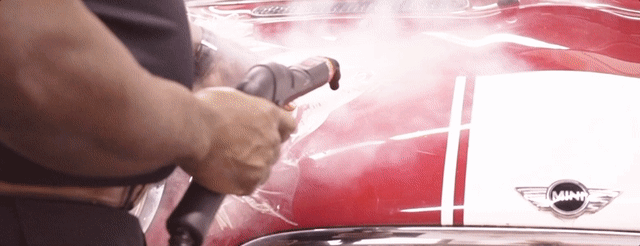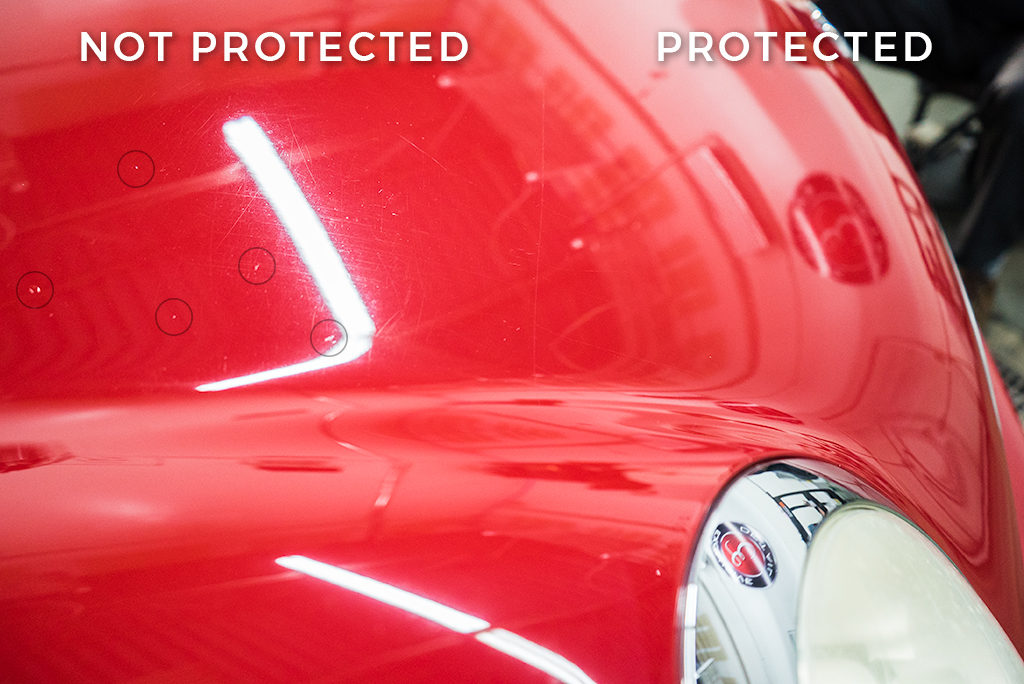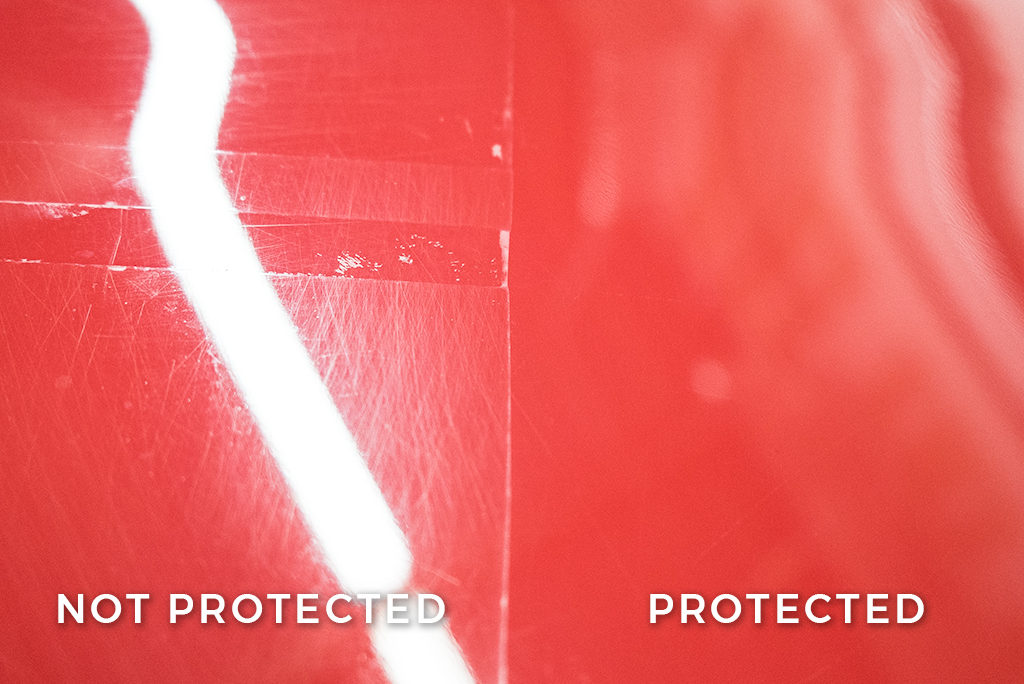The promise of automotive Paint Protection Film is that it will keep your car looking newer for longer. It will prevent paint damage like rock chips, small scratches, chemical etching, and oxidation.
Sounds great. But does it keep it’s promise? Does Paint Protection Film really make a difference?
To help answer that question, we captured some images and video of a Mini Cooper that was brought to our shop for Paint Protection Film removal. This particular vehicle had a partial front applied five years ago, and the vehicle owner wanted to remove and replace the film.

After removing the film, we took a look at the difference between the part of the hood that had been protected over the last five years, and the part of the hood that had not.
The above image was taken after we removed the Clear Bra. The line you see down the middle is where the film had stopped on the hood. Take a look at the difference in gloss between the unprotected paint (on the left) and the protected paint (on the right). This is with zero polishing. The black circles identify rock chips that had appeared in the unprotected portion of the paint.
Again, this is after we removed the Clear Bra, this time with a close up look at the contrast between the part of the hood that was protected and the part that was not. Look at the collection of scratches on the unprotected portion of the hood. As we noted above, this is with zero polishing. If I didn’t know any better, I would think this picture was a 50/50 of a polishing job. But this is not corrected paint vs. uncorrected paint. It is protected paint vs. unprotected paint.
Hopefully these images help give a sense of the value Paint Protection Film adds to your vehicle. Will it prevent all forms of damage indefinitely? No. But it will add a serious line of defense between your car’s paint and everything that can damage it. When you add Paint Protection Film, you extend the life and vitality of your car’s paint, so that five or seven or even ten years from now you can drive a car with like-new paint.


